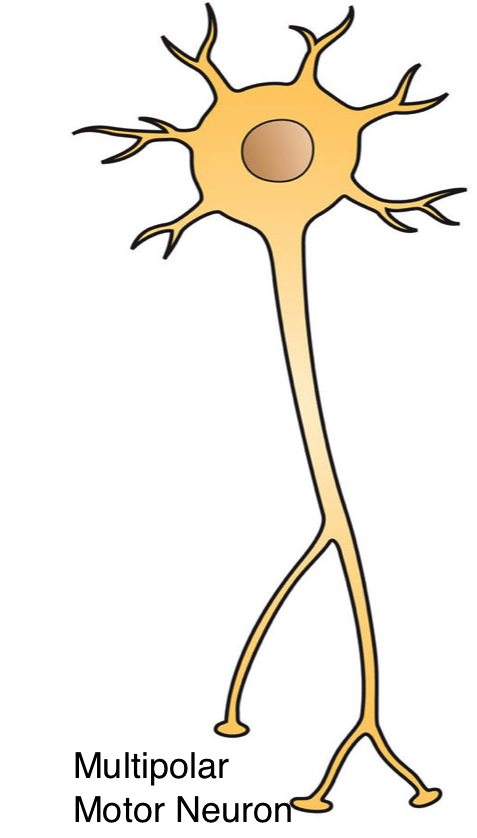Nervous tissue is made up of millions of nerve cells called neurons. The neurons are highly specialized cells which controls and co-ordinates the body activities and forms a system called Nervous system. Nervous system consists of three types such as CNS, PNS and ANS. Nerve cells originate from embryonic ectoderm. Nervous system consists of two kinds of cells such as neurons and neuroglia. Neurons forms the structural and functional unit of the nervous system. Neuroglia forms the connective tissue of nervous system which performs support and protection. Nerve cells do not divide. There is no division for neurons after birth. Least power of regeneration is found in neurons.
A neuron consists of three parts : Cell body, Dendrites and Axon.
Cell body
The cell body of a neuron is called cyton or soma or perikaryon. The cell body consists of large central nucleus with granular cytoplasm. In cytoplasm, there is presence of mitochondria, golgibody, rough endoplasmic reticulum and neurofibrils. The cytoplasm also consists of dots or granules like structure called Nissl’s granules or trigoid granules. Nissl’s granules are rich in RNA and concerned with protein synthesis.
Dendrites
Dendrites are highly branched extensions of the cytoplasm of the cell body. Dendrite helps to conduct an impulse towards the cell body. Dendrites are afferent processes because they bring nerve impulse to the cyton.
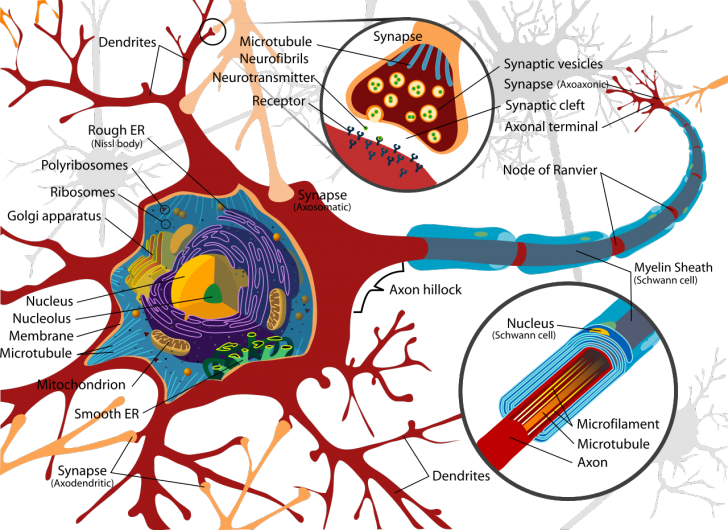
Axon
It is a longer process and branches distally into many fine filaments called telodendria. The knobbed ends of telodendria are called end bulbs, axon terminals or bultons. Ity is directly originated from the cell body as a small conical swelling like structure called axon hillock.
The cytoplasm of an axon is called axoplasm and surrounded by a plasm membrane called axolemma. It is an efferent process because it conducts impulse away from cell body to another neuron or tissue. Nissl’s granules are absent in axon and hillock. the extended axon or dendrite of neuron is called nerve fibre. It is efferent in nature. Nerve impulses are transmitted from terminal ends of axon to dendrites with help of chemicals called neurotransmitters which are adrenalin and acetylcholine.
Types of Axon
Two types of axon are Myelinated and Unmyelianted.
Myelinated- The myelinated or medullated or white fibre is surriunded by a phospsolipid covering called myeline sheath. The myelin sheath is produced by flattened cells called Schwann cells. It is found in white matter of brain and spinal cord. The conduction of impulses is faster in myelinated fibres. it serves as an insulting material. It causes saltatory conduction of impulses.
Unmyelinated– The nerve fibres without myelin sheath are called unmyelinated or non- myelinated.
The nodes of ranvier are absent. The Schwann cells present around the axon don’t secrete the myelin sheath the outermost membrane is called neurilemma. It is generally found in invertebrate’s body. In the vertebrates, it is found in ANS.
Types of Neuron
Neurons are classified on basis of number and nature of their processes. It is of four types-
i. Unpolar neurons
ii. Unipolar neurons
iii. Bipolar neurons
iv. Multipolar neurons
i. Unpolar neurons
Without brain axon and dendrites of neurons. Neurons are very primitive and forms never net like structure called non-polar or unpolar nervous system, e.g. coelenterata.
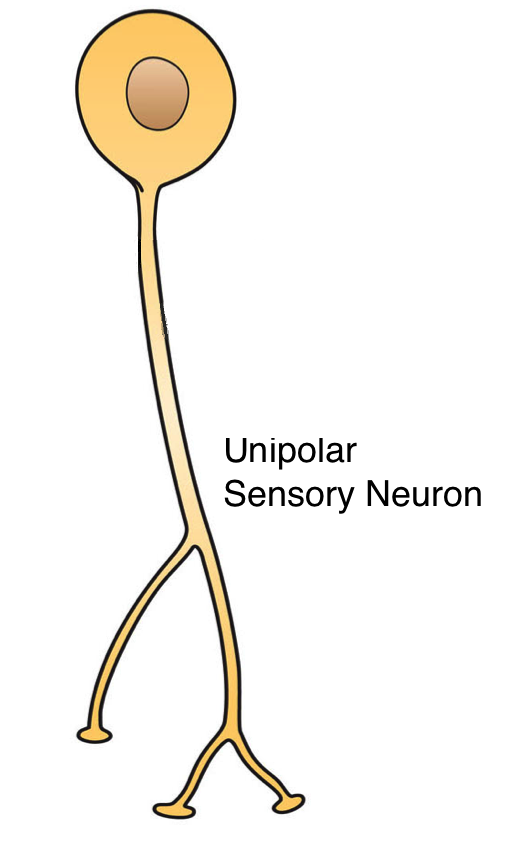 \
\
ii. Unipolar neurons
It has only one process extending from cell body as found in embryos and dorsal root ganglia af adult vertebrates. it is mainly found in peripheral nervous system.
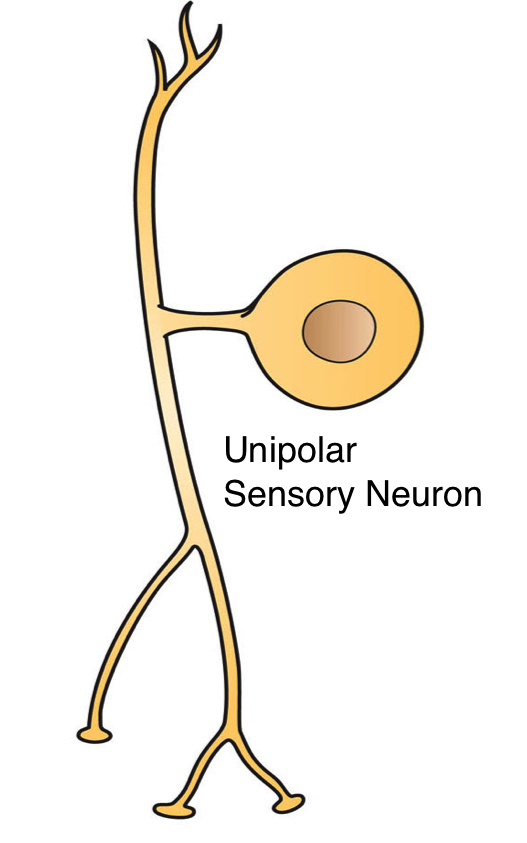
iii. Bipolar neurons
They have two processes that come out of the cell body such as dendrite and axon. They are found in the retina of eyes, olfactory epithelium and inner ear.
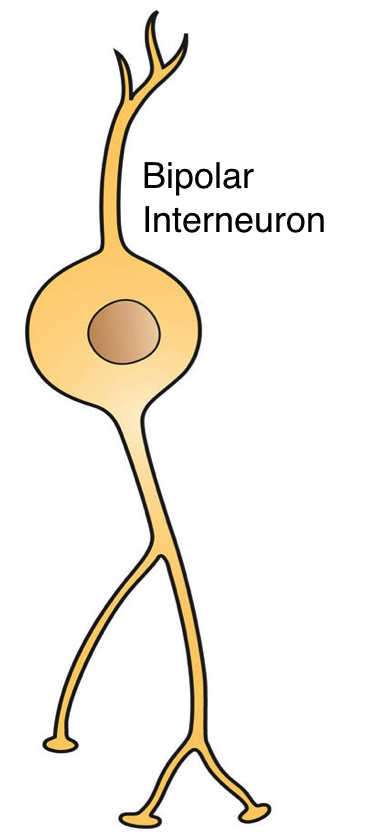
iv. Multipolar neurons
They have many processes coming out of the cell body such as several dendrites and one axon. It is most common type of neurons in the brain and spinal cord.
